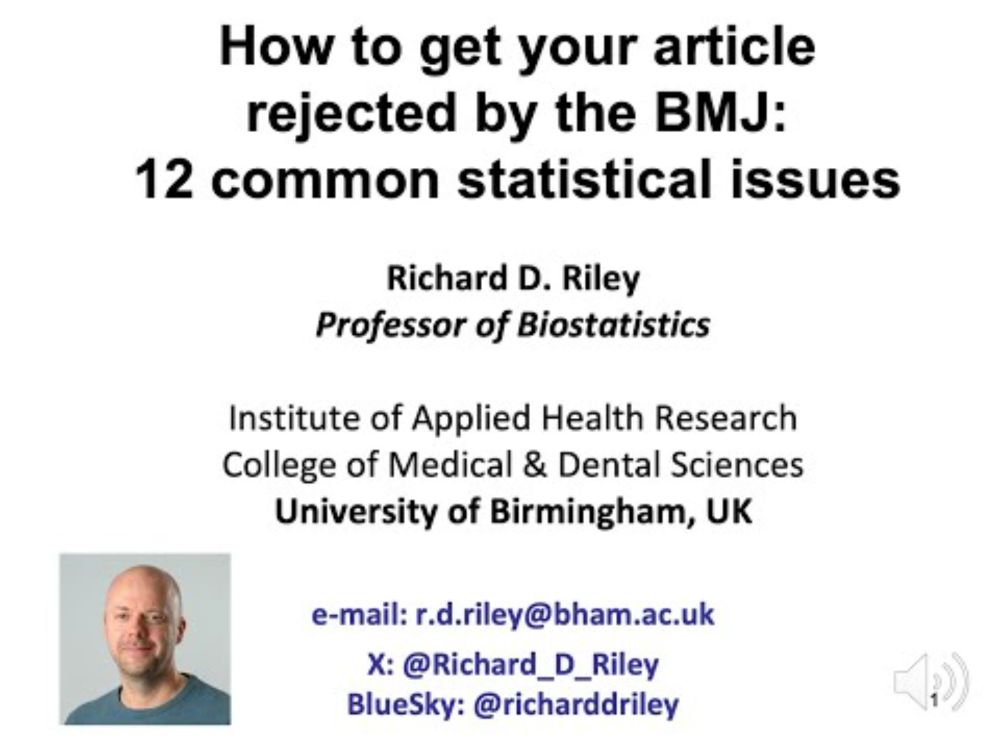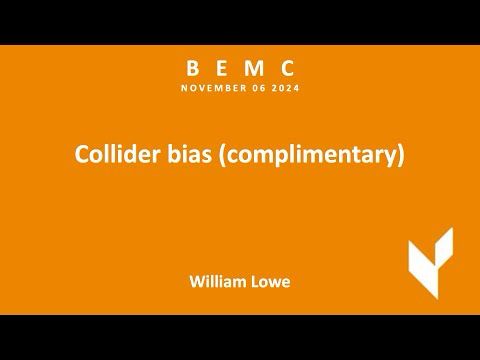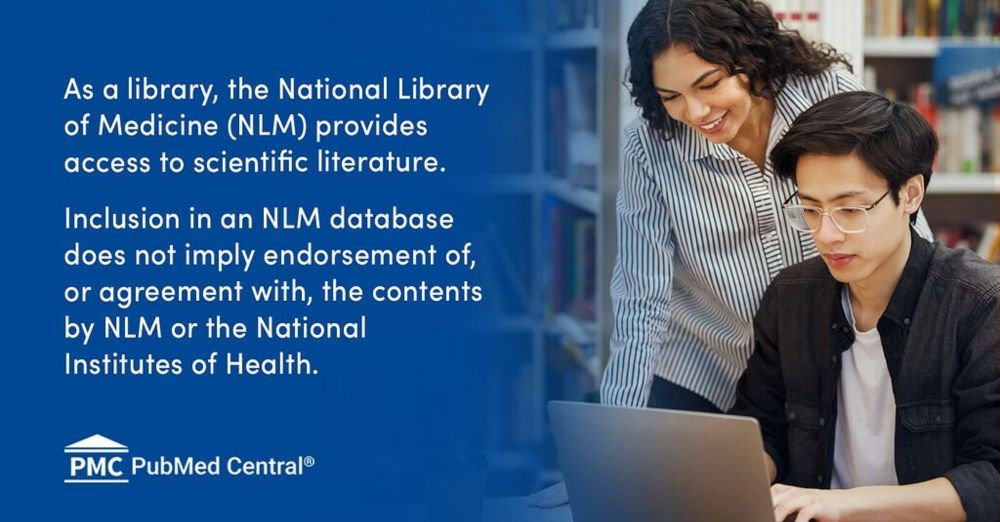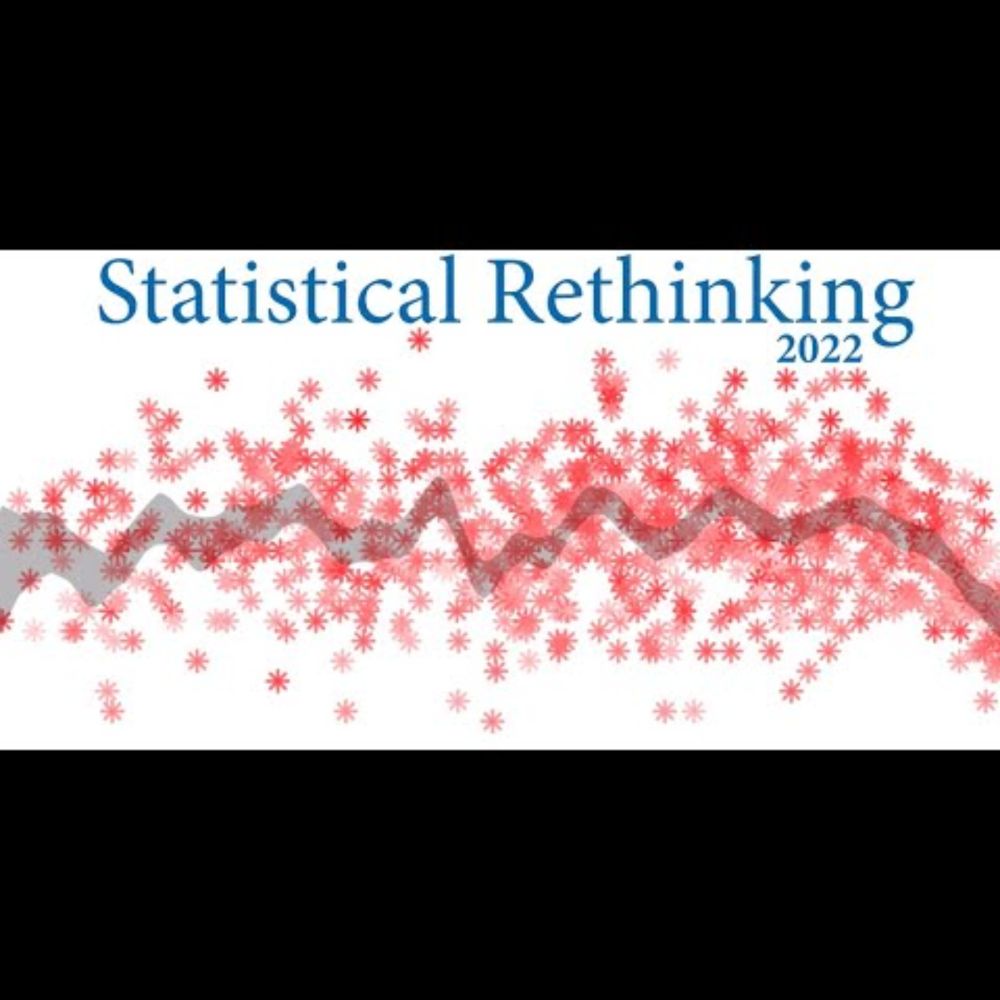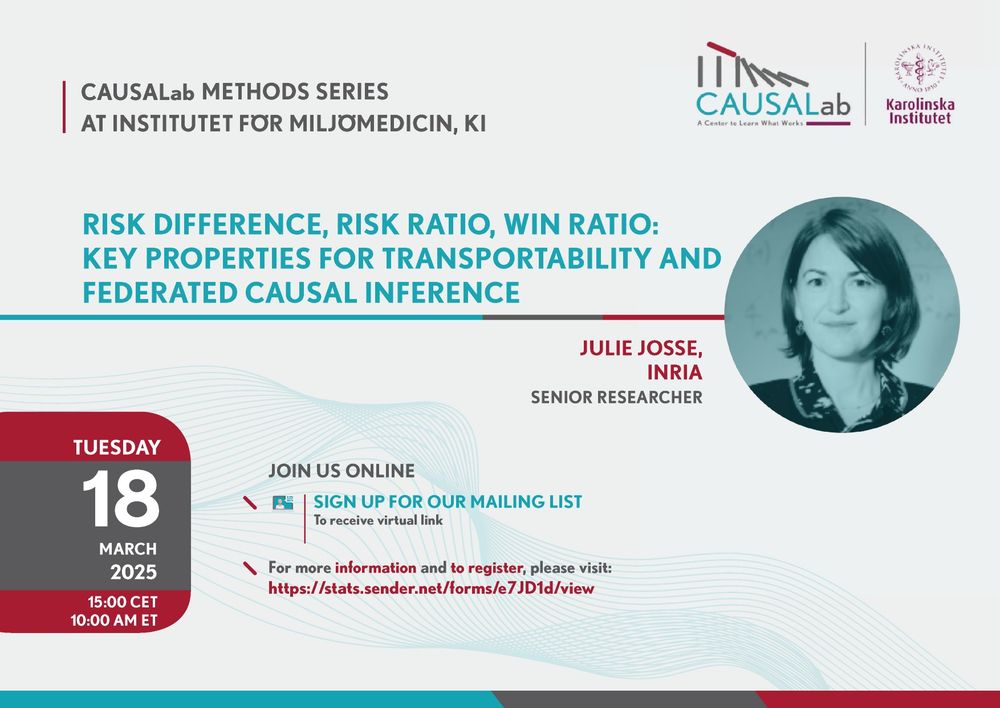
Julie Josse March 18 Methods Series talk, "Risk Difference, Risk Ratio, Win Ratio: Key Properties for Transportability and Federated Causal Inference."
Risk difference, risk ratio, win ratio.
Julie Josse, Senior Researcher at INRIA, presents next for the CAUSALab Methods Series @ki.se.
📆 March 18, 2025
⏰ 15.00 CEST/10.00 ET
📍 All Methods Series talks virtual
Register to attend 👇
stats.sender.net/forms/e7JD1d...
#causalinference #publichealth
04.03.2025 22:51 — 👍 13 🔁 2 💬 1 📌 1

Hilarious. After the DOGErs set up the new government-wide all employee email system in late January OPM, where it is housed, sent out an advisory which states explicitly that no employee ever has to respond to any of the emails. See 4.2 and 4.3. www.opm.gov/media/kfpozk...
23.02.2025 14:42 — 👍 6072 🔁 2046 💬 166 📌 148
Are you interested in age or cohort or period effects? I have just updated my primer on the topic!
Now with a new framing, a handy flow chart to determine which approach may be suitable, and a new empirical example. What do people in Germany think about mothers who work? osf.io/preprints/ps...
28.01.2025 14:48 — 👍 148 🔁 37 💬 4 📌 3
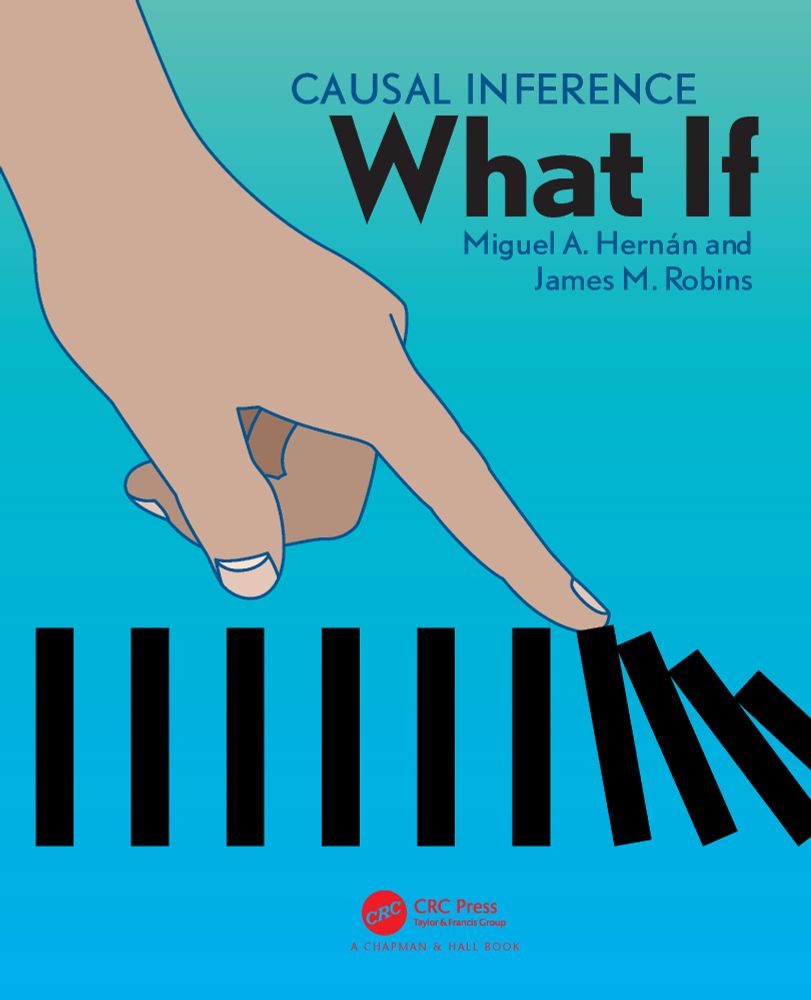
Upgrade your #causalinference arsenal.
A revision of our book "Causal Inference: What If" is available at miguelhernan.org/whatifbook
Thanks to everyone who suggested improvements, reported typos, and proposed new citations and material.
Enjoy the #WhatIfBook plus code and data. Also, it's free.
23.12.2024 09:28 — 👍 369 🔁 113 💬 10 📌 7

Posted this at the old place, but thought folks on @bsky.app might like to know I finally met my "mother".
12.12.2024 22:56 — 👍 147901 🔁 9202 💬 2947 📌 532
Introducing PowerLMM.js!
A new tool for power analysis of longitudinal linear mixed-effects models (LMMs) – with support for missing data, plus non-inferiority and equivalence tests.
powerlmmjs.rpsychologist.com
Would really appreciate your feedback as I refine this app! Details below 🧵👇
11.12.2024 10:20 — 👍 289 🔁 110 💬 11 📌 10
YouTube video by Richard_D_Riley
How to get your article rejected by the BMJ: 12 common statistical issues
Christmas 2024 gifts for your 'significant' other 🎄
1. How to get your article rejected by the BMJ (at Christmas or anytime)
Video: www.youtube.com/watch?v=iu4V...
Article: www.bmj.com/content/379/...
11.12.2024 08:34 — 👍 29 🔁 8 💬 1 📌 2
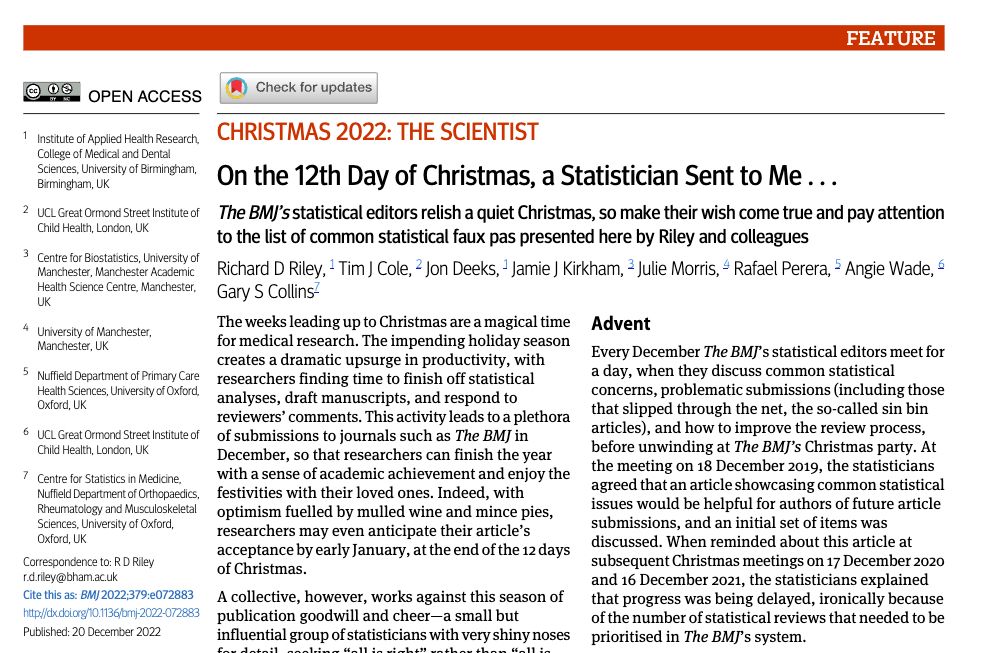
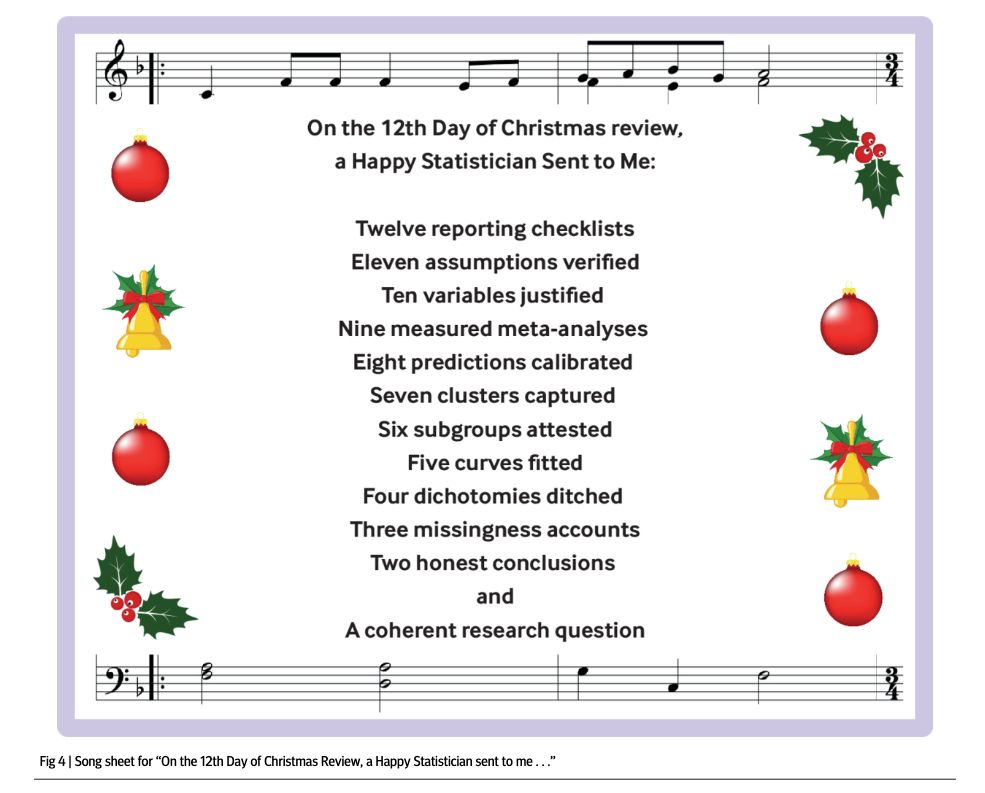
It's that time of year to bring out our @bmj.com xmas paper On the 12th Day of Christmas, a Statistician Sent to Me... from 2022 (w/ @richarddriley.bsky.social) with our list of commonly seen statistical faux pas🎄
www.bmj.com/content/379/...
#StatsSky #EpiSky
05.12.2024 15:00 — 👍 22 🔁 10 💬 0 📌 0
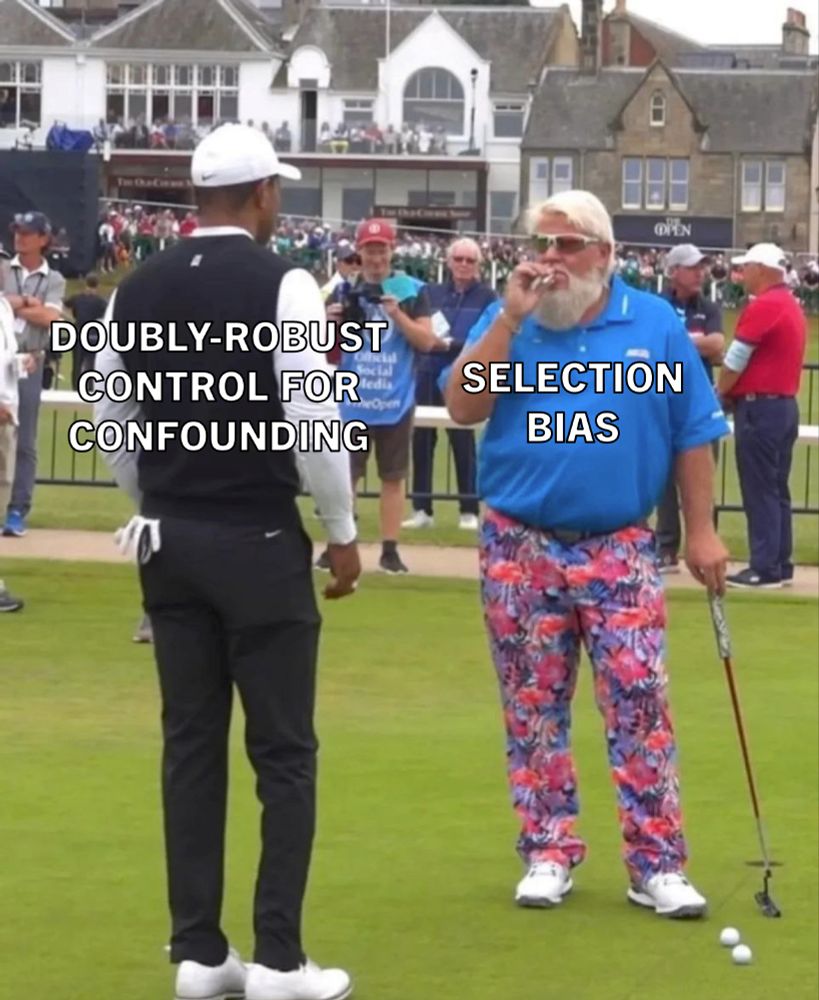
Tiger Woods and John Daly meme. Where Tiger Woods - looking professional - is labelled "doubly-robust control for confounding". And John Daly - looking very relaxed and smoking a cigarette - is labelled "Selection bias".
STOP IGNORING SELECTION BIAS!
#EpiSky #StatsSky
04.12.2024 12:08 — 👍 67 🔁 11 💬 2 📌 0
Woohoo, our paper is live!
This haiku summarizes it best:
Raw model results?
Stop! Hard to understand! Use
{marginaleffects}
02.12.2024 21:09 — 👍 191 🔁 33 💬 5 📌 1

Peacock: Stream TV and Movies Online, Watch Live News and Sports
Watch TV shows and movies online with Peacock. Stream iconic shows and movies, exclusive Peacock Originals, live news and sports and more.
You need Peacock to watch Michigan basketball this season -- starting next week!
Peacock just raised prices BUT is having its best sale of the year. You can get a year's subscription for just $19.99 this week (75% off).
Sign up here: imp.i305175.net/c/2991622/22...
25.11.2024 17:20 — 👍 10 🔁 3 💬 2 📌 5
YouTube video by Berlin Epidemiological Methods Colloquium
BEMC NOV 2024 - William Lowe - Collider bias (complimentary)
The organisers have sensibly kept this hidden as long as possible, but here's the talk.
youtu.be/m56YEkkWYzI
CW dad jokes, tendentious claims, Monty Hall problem.
Best watched at zero speed, while doing something actually productive instead.
16.11.2024 10:14 — 👍 30 🔁 7 💬 3 📌 2

Save the Dates! CAUSALab Summer Courses on Causal Inference
Week 1 Courses: June 16-20, 2025
No courses on June 19th in observance of Juneteenth. June 20th extended to full day.
Week 2 Courses: June 23-27, 2025
Save the dates!
CAUSALab’s Summer Courses on #causalinference return June 2025. Detailed course information to be announced in the coming weeks.
Join our 2024-2025 course listserv to receive updates first: harvard.az1.qualtrics.com/jfe/form/SV_...
Learn more:
causalab.hsph.harvard.edu/courses/
26.11.2024 18:05 — 👍 16 🔁 7 💬 0 📌 0
As well as prognostic factors that *aren't* imbalanced! It's amazing. Links to good advice on "how" in the post below.
26.11.2024 14:47 — 👍 21 🔁 7 💬 1 📌 0
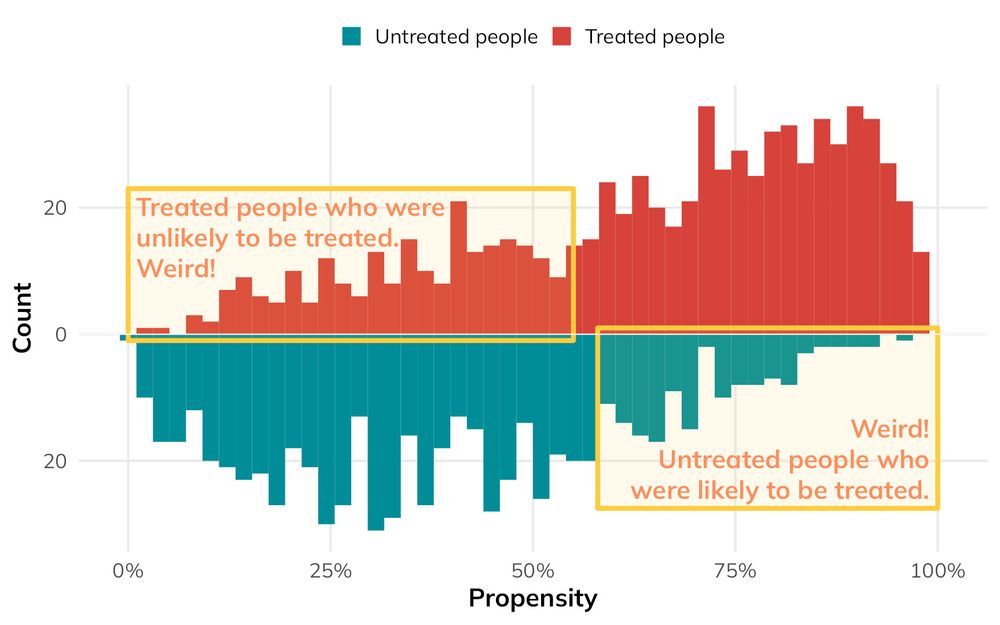
Mirrored histogram showing “weird” parts of the population: treated people who were unlikely to be treated, and untreated people who were likely to be treated
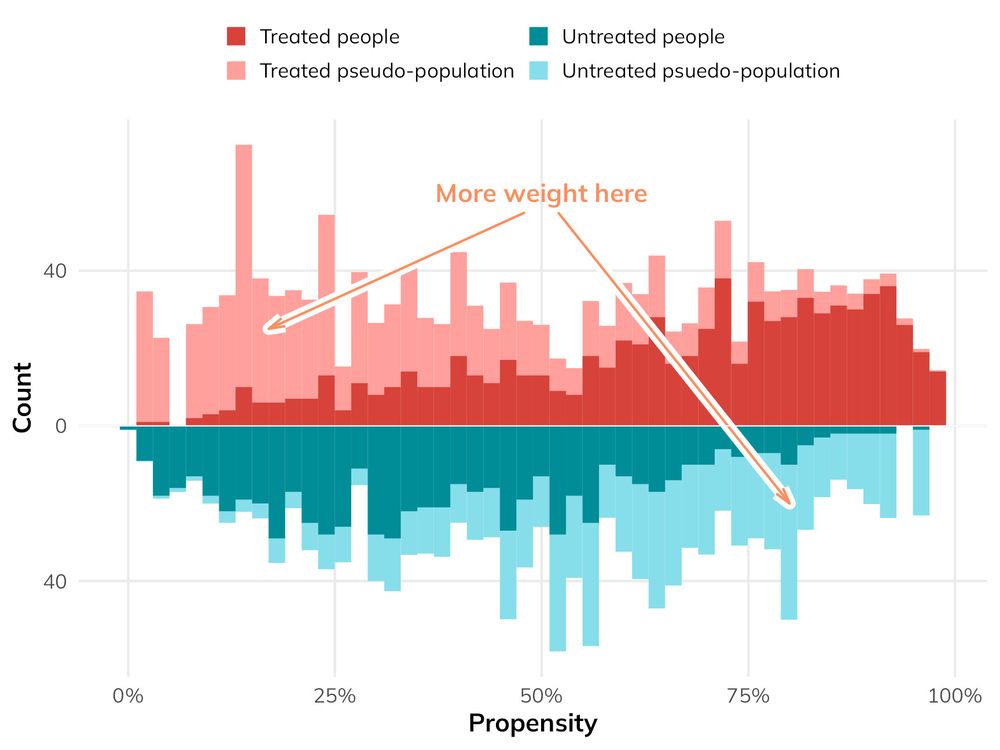
Mirrored histogram showing pseudo-populations of treated and untreated people that have been reweighted to be more comparable and unconfounded
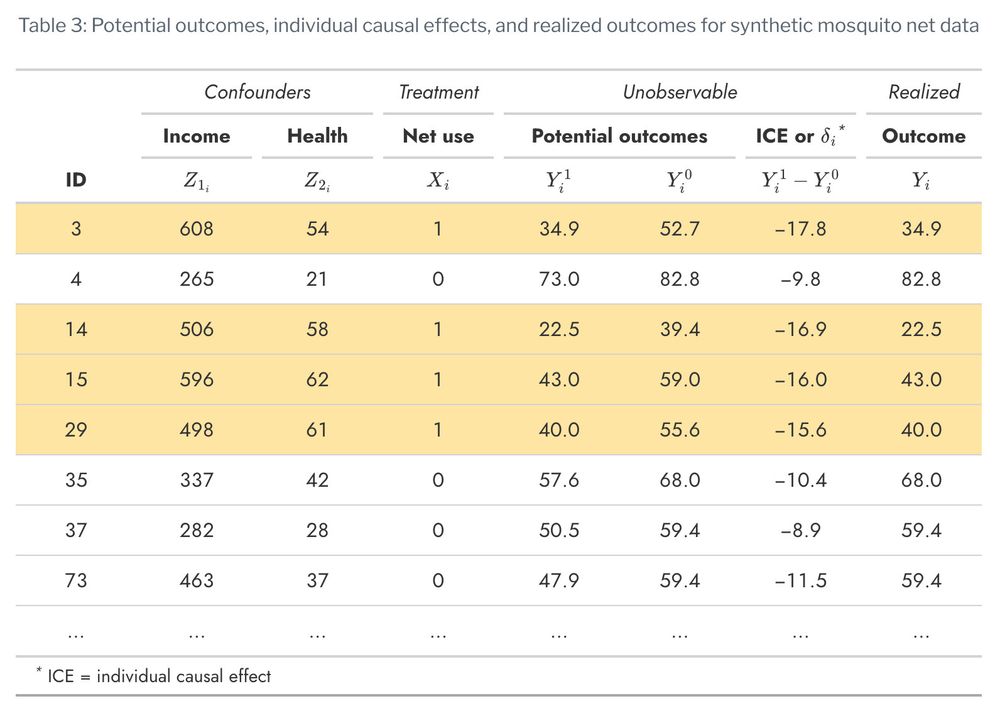
Table showing potential and realized outcomes for 9 simulated people

Before we calculate these different treatment effects with the realized outcomes instead of the hypothetical potential outcomes, let's look really quick at the practical difference between the true ATE, AT 1, and ATU. All three estimands are useful for policymaking!
The ATE is -15, implying that mosquito nets cause a 15 point reduction in malaria risk for every person in the country. This includes people who live at high elevations where mosquitoes don't live, people who live near mosquito-infested swamps, people who are rich enough to buy Bill Gates's mosquito laser, and people who can't afford a net but would really like to use one. If we worked in the Ministry of Health and wanted to know if we should make a new national program that gave everyone a free bed net, the overall reduction in risk is -15, which is probably pretty good!
The ATT is -16.29, which is bigger than the ATE. The effect of net usage is bigger for people who are already using the nets. This is because of underlying systematic reasons, or selection bias. Those using nets want to use them because they need them more or can access them more easily-they might live in areas more prone to mosquitoes, or they can afford to buy their own nets, or something else. They know themselves and understand some notion of their personal individual causal effect and seek out nets. If we removed access to their nets, it would have a strong effect.
The ATU is -13.63, which is smaller than the ATE. The effect of net usage is smaller for people who aren't using the nets. Again, this is because of selection bias. Those not using nets are likely not using them for systematic reasons-they live far away from mosquitoes, they've received a future malaria vaccine, they have some other form of mosquito abatement, or something else. Because they can read their own minds, they know that mosquito net use won't do much for them personally, so they don't seek out nets. If we expanded access to nets to them, they wouldn't benefit
From the archives: Have you (like me!) wondered what the ATT means and how it's different from average treatment effects? I use #rstats to explore why we care about (and how to calculate) the ATE, ATT, and ATU #polisky #episky #econsky www.andrewheiss.com/blog/2024/03...
22.11.2024 14:50 — 👍 206 🔁 44 💬 8 📌 5
Biostatistics for Biomedical Research - 16 Analysis of Observer Variability and Measurement Agreement
#statistics thought of the day:For measurement agreement/observer variability, consider powerful & easier to interpret (than variance components) all-relevant-pairs-mean-absolute-discrepancies, "relevant" chosen to match inter/intra observer interest hbiostat.org/bbr/obsvar #StatsSky #epiSky
19.11.2024 16:25 — 👍 37 🔁 4 💬 3 📌 0
Yo, Chris. Don’t forget about me 😈.
19.11.2024 04:59 — 👍 1 🔁 0 💬 1 📌 0
no idea what i’m doing on here yet but these starter packs seem cool. let’s put one together for the SEM crowd, yes?
please add folks and grow the community!
go.bsky.app/VYkpXdS
15.11.2024 20:58 — 👍 23 🔁 11 💬 14 📌 2

Getting ready for winter adventures. #dogsofbluesky #adventuredogs
19.11.2024 04:56 — 👍 9 🔁 0 💬 0 📌 0
Telling Stories with Data - 16 Multilevel regression with post-stratification
Was recommending to a colleague POSTSTRATIFICATION (*distant thunder*) and even MULTILEVEL REGRESSION AND POSTSTRATIFICATION (*closer thunder*). I pointed them at @rohanalexander.bsky.social's book, chapter 16, which is free online. Contains an election forecasting example.
14.11.2024 12:42 — 👍 94 🔁 15 💬 2 📌 1
Had a blast teaching this today! All the #rstats materials are available at talks.andrewheiss.com/2024-11-13_u...
13.11.2024 22:08 — 👍 101 🔁 18 💬 4 📌 2
3 Measures of Evidence – Introduction to Bayes for Evaluating Treatments
#statistics thought of the day:Is an EHR randomization defective? Simple example contrasting frequentist and Bayesian inference. Would you rather have Pr(getting MORE heads than what we observed if a coin is fair),or Pr(Pr(heads) is outside [0.48, 0.52])? #stats #rstats hbiostat.org/bayes/bet/ev...
12.11.2024 12:30 — 👍 16 🔁 5 💬 2 📌 0
The collective hours of life I have wasted while formatting a document in the academic world. 😡.
07.11.2024 13:07 — 👍 2 🔁 0 💬 0 📌 0
Montage of animations from the 2022 lectures. Playlist: https://www.youtube.com/playlist?list=PLDcUM9US4XdMROZ57-OIRtIK0aOynbgZN
Statistical Rethinking 2022 - Theatrical Trailer
Local registration for the 2024 round of my FREE OPEN ONLINE Statistical Rethinking course has begun. I'll open up registration on Sunday 3 December. See theatrical trailer below and other details on the course github page #stats 🧪 github.com/rmcelreath/s...
28.11.2023 12:21 — 👍 68 🔁 43 💬 2 📌 7
Investigator @mgbresearch.bsky.social and @causalab.bsky.social. Interested in epidemiology, causal inference and pedagogy.
The official account of the Harvard T.H. Chan School of Public Health Department of Epidemiology | Our YouTube: http://goo.gl/3JZ4wR
Health, dignity, and justice for every human. This is the official account for #HarvardChan: hsph.harvard.edu
Senior Lecturer in Physiotherapy at La Trobe U | Senior Research Fellow at La Trobe Sport and Exercise Medicine (LASEM) Research Centre
Working to reduce knee injury burden among women & girls
Sports injury prevention & rehabilitation
👧👦🐶🐈 🏃🏼♀️🏕️
PhD in Health & Rehab Sci. Knowledge Mobilization Associate at Arthritis Research Canada. Sectional instructor at Western University. Views are my own.
Biostatistician, London School of Hygiene & Tropical Medicine. Blogging at thestatsgeek.com
The official "Resistance" team of U.S. National Park Service. Our website: www.ourparks.org
A team of scientists & activists, in & around Yellowstone National Park. 501c3. Posting photos, ideas & solutions, because together, we can change the world.
Please report malicious trolls & imposters.
We are AltYelloNatPark™️
PT, DPT, PhD. Assistant Professor, Univ. of Pitt PT. Overuse tendon injuries, ACL, POCUS, mechanobiology, and biomechanics.
🏠Delaware➡️JMU➡️UD➡️Pitt
Smattering of rehab research, 🦅🏀⚾️Philly sports, and accessible healthcare advocacy.
Professor, Physiotherapist, PhD, Director of La Trobe Sport and Exercise Medicine (LASEM) Research Centre, and IOC Research Centre
Investigating women's healthy sport participation; injury/OA prevention and management.
Great team @ LASEM. Views my own
Leading Research. Finding Answers. Saving Lives. Canada’s largest clinical arthritis research centre.
arthritisresearch.ca
Official Blue Sky of Oregon State Gymnastics | #GoBeavs
Linktr.ee/BeaverGym
An unofficial bot for NCAA women's gymnastics news from NCAA.com. 🤸♀️
RSS: https://www.ncaa.com/news/gymnastics-women/nc/rss.xml
GitHub Repo: https://github.com/mgmisiak/ncaawgymbot
Made by @mmisiak.bsky.social 〽️
Based on @bbcnews-uk-rss.bsky.social
National Governing Body of Gymnastics in the United States.
Nestled between the foothills of the Wasatch Mountains & Salt Lake City, the University of Utah excels at research, innovation & student success.
Learn more at utah.edu
Utah's independent nonprofit news source covers news, politics, faith, arts and sports for Salt Lake City and Utah. Read Pulitzer Prize-winning journalism.
[bridged from https://sltrib.com/ on the web: https://fed.brid.gy/web/sltrib.com ]
Royalty plays here 👑
UTAvWAS tix: bit.ly/UTAvWAStix25
2026 Season Tix: bit.ly/URFCSeasonTickets26
Automatically tweets new posts from http://statmodeling.stat.columbia.edu
Please respond in the comment section of the blog.
Old posts spool at https://twitter.com/StatRetro
Serving sports fans. Anytime. Anywhere.





